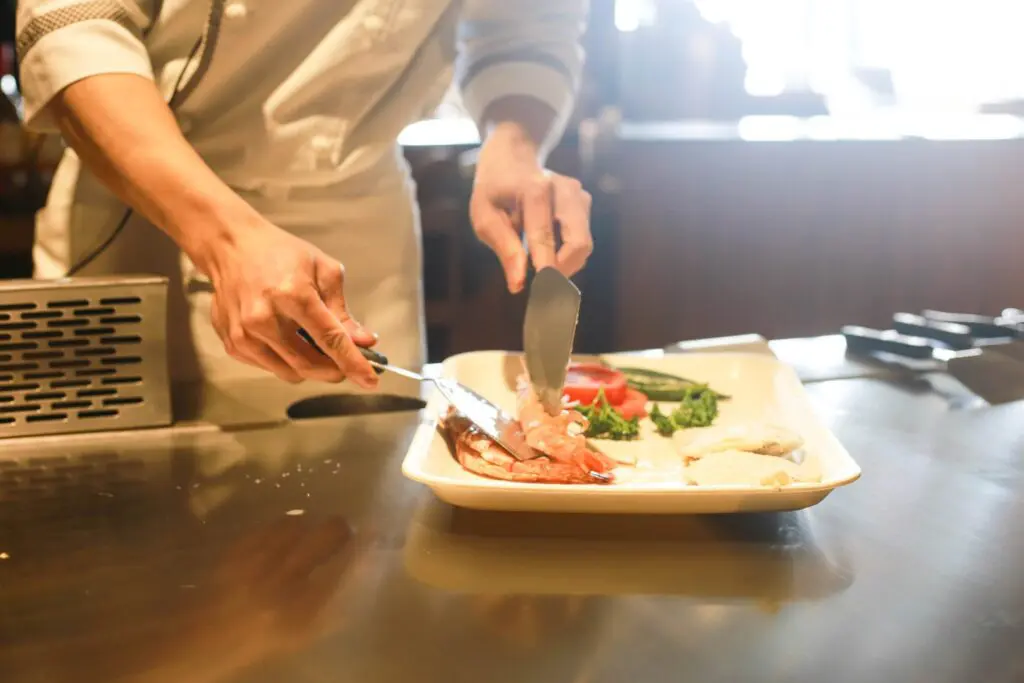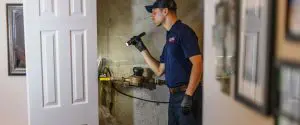

Restaurant Health Regulations and Their Relation to Pest Control
Health inspections can be daunting for any new or existing restaurant, but with the proper preparation, any establishment can earn an “A” rating. In this guide, we will discuss food safety regulations, inspection preparation, and how pest control can impact your health inspection rating.
General Food Safety Regulations
While every city’s health department has its own specific food-safety regulations, there are several universal elements that every health inspector will assess. Many of the following food-safety regulations are outlined in detail in the FDA’s Code of Federal Regulations Title 21.
- Proper Food Storage
All food on the premises must be stored properly so as to avoid any sort of contamination. This includes storing food at the proper temperatures as well as storing it in the correct containers. All food should be stored in commercial-grade food storage containers and needs to be kept at least 6 inches off of the ground and away from the wall. All containers should be labeled and dated, and outdated food must be promptly and properly disposed of.
- Restaurant Cleanliness
The overall cleanliness of a property is one of the most important factors in a health inspection, as unclean spaces breed bacteria and attract pests. Floors, appliances, grease traps, refrigerators and freezers, storage rooms, and food storage containers should all be spotless. Storage rooms, offices, kitchens, and dining areas should also be neat and organized.
- Pest Prevention Measures
All restaurants, bars, and other food service establishments must take adequate pest prevention measures in addition to receiving regular pest control treatments. Pest activity cannot be allowed in any area of the establishment, including kitchens, storage areas, and dining areas. Establishments must work with a pest control expert to design a safe and effective pest control plan. A log must be kept detailing the pest control plan, including dates of service, types of pesticides used, and any food safety or pest risks that are discovered during a treatment visit. Between pest control treatments, pest exclusion methods must be practiced.
- Employee Hygiene
All employees need to observe strict personal hygiene. Uniforms should always be clean, nail polish should be avoided, and some sort of head covering should be worn during food preparation. Ask your employees to stay home when they are sick, especially if they are contagious. Most importantly, employees must always wash their hands after using the bathroom or handling certain ingredients like raw meat or allergens. Ideally, disposable gloves should be worn when handling raw meat or allergens, and used gloves should be properly disposed of immediately after use.
- Safety Measures
A wide variety of safety precautions must be observed throughout the restaurant. Measures should be taken to prevent fire, slips or falls, burns, cuts, and other similar injuries. The property should also have an adequate number of easily-accessible fire escape routes.
- Alcohol and Food Licenses
All establishments must possess the proper licenses to serve food and/or alcohol. Such licenses demand regular health inspections.
Food Safety Regulations Connected to Pest Control
Food safety and pest control naturally go hand-in-hand. Regulations 1 through 3 are all related to pest control in some capacity. Proper food storage is mainly about preventing food-borne illnesses caused by expired or improperly stored food. However, proper storage also plays a large role in pest exclusion. Food that is left out or kept in inadequate containers will attract pests of all kinds, which means that proper food storage should always be factored into a pest control plan.
Similar to food storage, restaurant cleanliness can determine whether or not pests will find an establishment attractive. Of course, any food scraps that are left out are a major attractant. Additionally, clutter and filth will lure in certain pests. Rodents and cockroaches prefer to stay out of sight, so they are drawn to cluttered areas with plenty of hiding spots, nesting materials, and protected pathways that lead to food. Pests like flies will feed and breed in the filth of garbage, clogged drains, and dirty mop buckets.
The regulation that is most directly related to pest control is of course number 3, pest prevention measures. An establishment’s pest control plan must sufficiently keep out all pests. If any signs of pest activity arise, the control plan must be revised in order to improve its effectiveness. Some of the most common pest-related health code violations are live rodents or insects, pest feces, insect carcasses, and chewed or damaged food packaging.
How To Prepare for a Health Inspection
The FDA recommends that all food service establishments develop a Hazard Analysis Critical Control Point (HACCP) plan to manage any and all food safety hazards. According to the The National Advisory Committee on Microbiological Criteria for Foods (NACMCF), a successful HACCP plan is created using the following seven principles:
- Conduct a hazard analysis.
- Determine the critical control points (CCPs).
- Establish critical limits.
- Establish monitoring procedures.
- Establish corrective actions.
- Establish verification procedures.
- Establish record-keeping and documentation procedures.
Once an HACCP plan has been established, it needs to be followed carefully and should be taught to all employees.
Another great way to stay prepared for health inspections is to run test inspections yourself. After acquiring a copy of your local health inspection grading criteria, perform a thorough inspection in all areas of your establishment. Develop and execute a plan to correct any possible violations and to prevent them from recurring. Between test inspections and real inspections, keep a sharp eye out for any health offenses committed by employees, like not washing hands when necessary or failing to properly dispose of waste. Employees are an establishment’s first line of defense against pests, so they should be thoroughly educated in standard pest prevention methods as well as signs of pest activity that should be reported.

What To Expect During a Health Inspection
Introduction: When a health inspector arrives, they will identify themselves and alert you of the inspection. Be sure to check their credentials before the inspection to confirm that they are a legitimate inspector. If they appear illegitimate, you may also call their office to confirm the inspection appointment. Once the inspector’s credentials are confirmed, allow the inspection to commence.
Inspection: The inspector will thoroughly check all areas of the establishment and make notes regarding overall cleanliness and compliance with regulations, as well as any violations. The owner or manager of the establishment should stay with the inspector throughout the process to answer or ask any questions that arise.
Assessment and Grading: After performing the inspection, the inspector will issue a grade. Grades are generally calculated using a points system. Different cities use different points systems, and the system that is used in any given inspection depends on the local area’s health department regulations. The points earned during an inspection translate into one of three letter grades:
- A: The establishment has minimal or no health code violations.
- B: The establishment has minor health code violations that need to be corrected.
- C: The establishment has numerous health code violations that present a public health risk. A restaurant with a C grade is on the verge of being shut down.
Follow-up (if necessary): Depending on the number and severity of violations present in an establishment, follow-up actions may be required. Certain violations will need to be addressed immediately on the day of the inspection in order to avoid a temporary shut-down. If a multitude of violations are found, you may be notified that a follow-up inspection will be performed after you are granted enough time to correct the indiscretions. If the violations are severe, the establishment may be temporarily shut down between inspections. Re-inspections may incur a fee.
Health inspections in restaurants typically occur every 10 to 12 months. The worse an establishment’s grade, the more often it will be inspected.
If you’re in the market for a reliable Restaurant Pest Control Plan, give Excel a call today. We will help you design a control plan that is safe, effective, and compliant with all of your local health department’s restaurant pest control requirements. With Excel on your team, your hard-earned “A” rating will never be compromised by pests.






